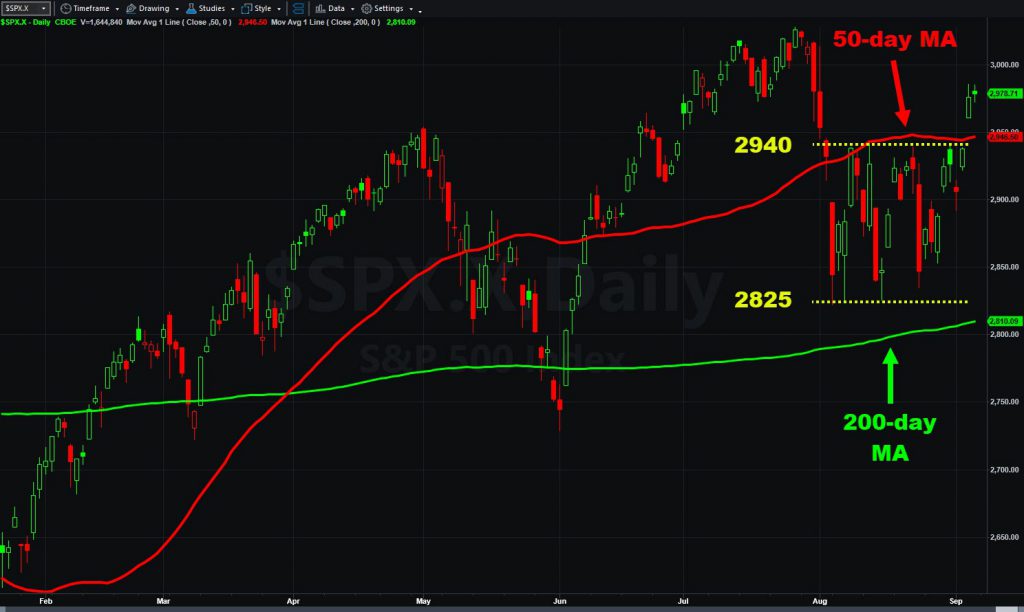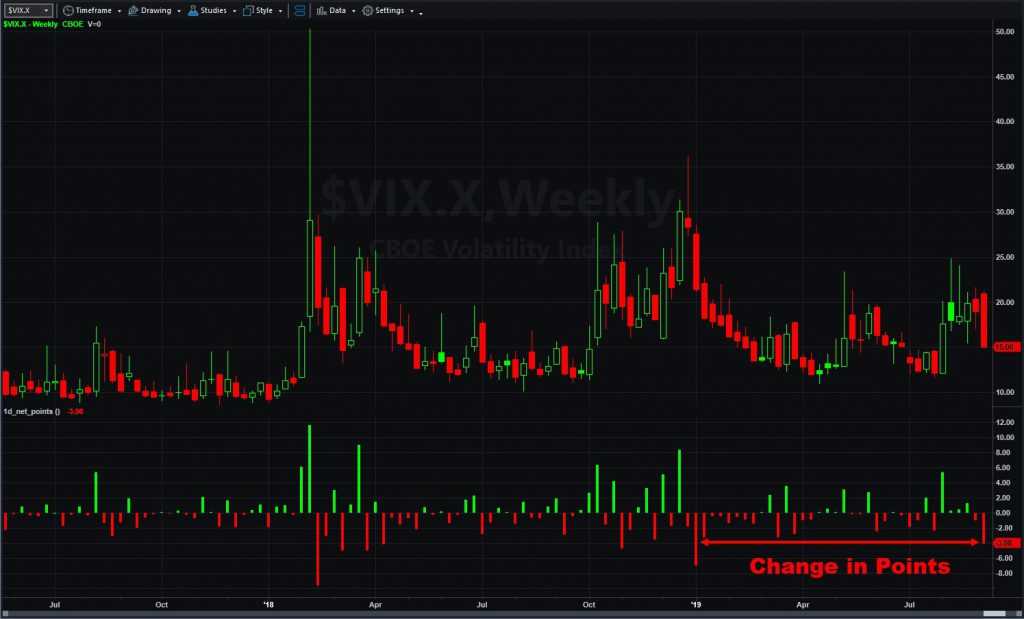Stocks kept climbing last week as President Trump and China moved closer to a trade deal — potentially as soon as next month.
The S&P 500 rose 1.8 percent between Friday, August 30, and Friday, September 6. The index also managed to get back above its 50-day moving average for the first time since crashing in early August.
Back then, investors were worried about President Trump’s trade war with China. This time, they’re optimistic about a deal after Beijing agreed to send officials for high-level talks in early October.
“There’s more possibility of a breakthrough,” a well-placed Chinese publication said last Thursday. White House advisor Larry Kudlow confirmed those hopes the next day by saying communications “have been open” and “went well.”
Other news in the holiday-shortened week was mixed. A key manufacturing index contracted for the first time in three years, while the service sector and employment remained solid.

Either way, tariffs are the big story impacting confidence. That will likely make investors highly sensitive to headlines about next month’s summit. Traders also may want to keep an eye on President Trump’s tweets.
Risk On Sectors Lead the Rally
Every major sector advanced last week, although risk-on industries with exposure to Asia fared the best. That was especially true for semiconductors and Chinese Internet stocks.
Energy rose amid optimism toward the global economy and signs of the oil glut easing. Consider these three factoids:
- Crude oil futures (@CL) advanced for the second straight week, up 2.6 percent — their biggest gain the last eight weeks.
- The Energy Department’s report showed larger-than-expected inventory declines for two weeks in a row.
- The Baker Hughes Rig count, a measure of domestic drilling, just fell below 900 for the first time since November 2017.
Retailers also continued to bounce from long-term lows. They’re another group that fell on tariff fears, despite strong consumer spending. Will investors shop for value into Thanksgiving and the holidays?
Fear Index Deflates
Safe havens that benefit from low interest rates lagged. Utilities and health-care barely rose and biotechnology slipped. Gold miners, which previously surged on recession fears, got hammered.
In another sign of confidence returning, the Cboe Volatility Index ($VIX.X) dropped almost 4 points last week. That was its biggest decline since markets rebounded at the start of January.

The two biggest gainers in the S&P 500 were beaten-down retail names rebounding from long-term lows. Tapestry (TPR), the parent of Coach, rose 17 percent. PVH (PVH) followed with 12 percent bounce.
Cooper (COO) found itself at the bottom of rankings, down 8 percent. The medical-device company firm remained under pressure following weak results in late August. Tyson Foods (TSN) followed with a 6 percent drop amid disappointing guidance.
Here Come the IPhones
This week barely has any earnings but there are some big events.
Apple (AAPL) gets the ball rolling at 1 p.m. ET tomorrow when CEO Tim Cook is expected to unveil three new iPhones.
Wednesday brings producer-price inflation and crude-oil inventories.
On Thursday morning, the European Central Bank is expected to announce monetary stimulus — possibly including an interest-rate cut. (The U.S. Federal Reserve may have similar news six days later.) Consumer prices and initial jobless claims are also due. Chip maker Broadcom (AVGO) reports quarterly results in the afternoon.
Retail sales and consumer sentiment wrap things up on Friday morning.
Traders may also want to keep an eye open for Brexit news after British Prime Minister Boris Johnson lost key support in Parliament last week.


























